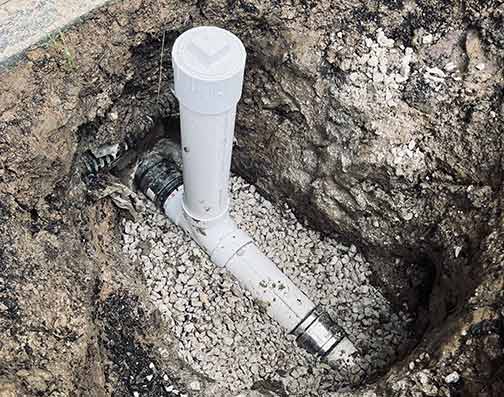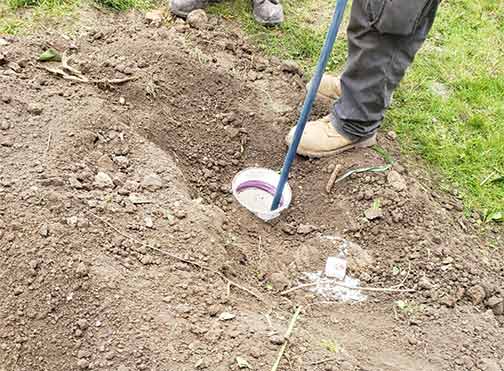
When it comes to the plumbing system in your home or commercial property, there are various components that work together to ensure proper wastewater disposal. One crucial aspect of this system is the sewer line cleanout. Here we aim to explain what a sewer line cleanout is, its purpose, and its importance in maintaining a well-functioning plumbing system.
What is a Sewer Line Cleanout?
A sewer line cleanout is an access point designed to provide easy access to your property’s main sewer line. It is typically a PVC pipe with a removable cap placed at strategic locations along the sewer line. These cleanouts allow professional plumbers to gain direct access to the main line for sewer camera inspections, maintenance, and sewer line cleaning purposes.
Purpose of a Sewer Cleanout
The primary purpose of a sewer cleanout is to provide a point of entry to the main sewer line. This access point enables plumbers to diagnose any issues within the system and perform necessary repairs or maintenance. Cleanouts are especially beneficial in cases of clogged or blocked sewer lines, as they simplify the process of locating and resolving the problem.
Key Components of a Sewer Line Cleanout
A typical sewer line cleanout consists of several elements that work together to form an effective access point. These components include:
Cleanout Pipe:
The cleanout pipe is a section of PVC pipe that connects to the main sewer line. It has a larger diameter than other pipes in the system to accommodate the insertion of plumbing equipment and tools.
Cleanout Cap:
The cleanout cap is a removable lid placed on top of the cleanout pipe. It provides an airtight seal when in place and prevents sewer gases and odors from escaping into the surroundings.
Cleanout Plug:
The cleanout plug is an alternative to the cap and is commonly found in older plumbing systems. It serves the same purpose as the cap but is screw-mounted instead.
Cleanout Tee:
The cleanout tee is a pipe fitting that connects the cleanout pipe and the main sewer line. It allows access to the sewer line without interfering with the normal flow of wastewater.
Access Rod:
An access rod, also known as a cleanout rod, is a long metal rod with a hook or loop at one end. It is used to remove the cleanout cap or plug when accessing the sewer line.
Importance of Sewer Cleanouts
Sewer line cleanouts play a crucial role in maintaining the functionality and efficiency of your plumbing system. Here are a few reasons why they are important:
Easy Inspection and Maintenance:
A properly installed sewer line cleanout provides easy access for local plumbers to inspect the condition of the sewer line, identify potential issues, and perform routine maintenance. This allows for proactive measures to be taken before major problems arise, saving time and money in the long run.
Efficient Troubleshooting:
In case of a sewer line blockage or clog, cleanouts simplify the troubleshooting process. By accessing the line through the cleanout, plumbers can locate the exact point of obstruction and resolve it more efficiently. This reduces the need for extensive digging or invasive measures to identify the problem.
Minimizes Health Risks:
Sewer line issues can lead to sewage backups, causing the release of foul odors and potentially harmful bacteria into your property. Regular cleanout accessibility ensures prompt and proper repairs, preventing health hazards associated with sewage leaks and minimizing the risk of contamination.
Prevents Costly Repairs:
A well-maintained sewer line with accessible cleanouts helps prevent major plumbing emergencies. Timely detection and resolution of issues such as leaks, blockages, or deterioration can significantly reduce the risk of major pipe damage, thereby saving you from costly sewer line repairs or replacements.

If you encounter any sewer line issues or suspect a problem, it is advisable to seek professional help from licensed plumbers.
Maintaining and Using a Sewer Cleanout
To make the most of your sewer line cleanout, it is essential to follow certain maintenance practices and procedures. Here are some key points to keep in mind:
Regular Inspection:
Periodically inspect your cleanout to ensure it is free from blockages, debris, or damage. This will maintain its functionality and ease of access for future needs.
Professional Assistance:
If you encounter any sewer line issues or suspect a problem, it is advisable to seek professional help from licensed plumbers. They have the expertise and tools to effectively use the cleanout and resolve the underlying problems.
Avoid DIY Attempts:
Due to the complex nature of sewer lines and potential health risks associated with sewage, it is crucial to avoid DIY repair attempts. Incorrect handling, such as using excessive force or improper tools, can lead to further damage or injury. Always rely on trained professionals for sewer line maintenance or repairs.
Protection and Security:
Ensure the cleanout cap or plug is properly secured after inspections or maintenance. This prevents unauthorized access, keeps pests and debris away, and maintains the airtight seal to prevent sewer gases from being released into the environment.
In Summary
A sewer cleanout is an essential component of your plumbing system, providing access to the main sewer line for inspections, maintenance, and troubleshooting. By understanding the purpose and importance of cleanouts, you can ensure the smooth operation of your plumbing system, minimize risks, and prevent costly repairs. Regular maintenance and professional assistance will help you make the most of this crucial feature, ensuring the efficient and reliable disposal of wastewater from your property.